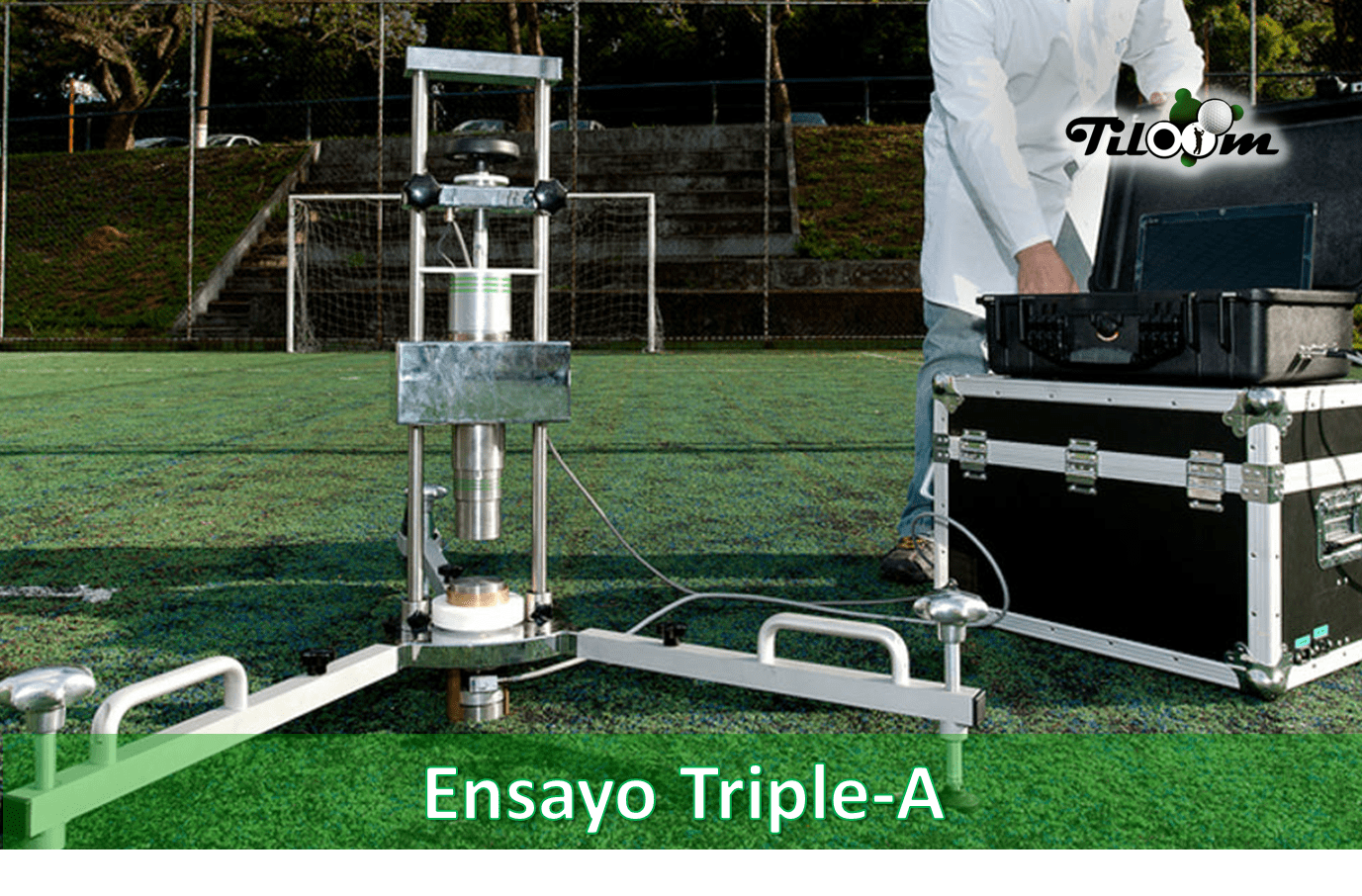🌟 Improve your sports field with a expert audit.

Share on RRSS

The Triple-A trial (Advanced Artificial Athlete) has established itself as a way of measuring the quality of a lawn. artificial. Although it can be used on natural grass as well, in this post we will explain it to you.

FIFA approved the use of Triple-A, thereby establishing quality standards. As well as building a homologation for the use of artificial turf in FIFA competitions.
At Tiloom we have used Triple-A on various natural grass pitches in the course of our work. Although the technology was designed for artificial turf, it can be of great interest to know the physical reactions of natural grass of the highest quality.
The test consists of releasing a mass onto the surface of the turf. Thanks to a data acquisition and processing device, it records the variables of the fall and acceleration in order to calculate:
It is a matter of calculating the millimetres that the head of the weight of the equipment sinks with each throw.
To satisfy FIFA QUALITY PRO the values must be between 4 and 10 mm +/-10%.
This parameter indicates the energy interaction between a surface and an athlete. Stiffer surfaces return more energy and therefore generate less fatigue. Concrete returns 100% of energy and sand returns 0%, being much more tiring to play on the latter.
Impact absorption measures the amount of impact energy that the surface can absorb. It is measured in relative terms, where concrete absorbs 0%, making it the most injurious surface to a falling player. Silica sand absorbs 100%, making it softer and less likely to cause injury if an athlete falls.
Valid values for FIFA QUALITY Pro for artificial turf are between 60% and 70%.
The test should be repeated at different points in the field. In this way it is possible to get a detailed knowledge of the surface area and also to make different statistics in the evaluation of the field. As the field evolves, repeating the test in different areas provides a great deal of information. It allows to know the evolution of the field during the course of the year and the usefulness of the work carried out.

During field trials we also conducted hardness testing at neighbouring points. A regression on the comparative point cloud generated between the hardness and the Triple-A test parameters shows very high correlations above an R2 of 0.9. So the relationship is well established.
It is very instructive and interesting to study the variables that can be measured in a field and compare them with each other over time. In this way, it is possible to observe whether the management carried out has positive or negative effects and also the evolution of the variables during the seasons, which facilitates a contrasted decision making.

We appreciate your interest in us, so we leave you this form so that you can subscribe and have priority access to our exclusive promotions and offersideal for saving money on your purchases and keeping your sports and agricultural fields at the forefront!
In addition, we will keep you informed about the LATEST NEWS in Greens and Agriculture with the latest entries from our Greenkeepedia and Agrikipediaincluding innovations, events and interviews with experts.
Click to subscribe now and get exclusive access!